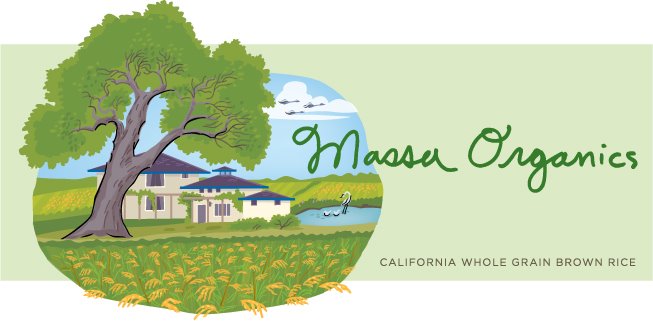Late Spring is the most critical time of the year for rice farmers. If you don't get an adequate plant population now, there is little you can do later in the season to increase your yield. And once you have planted the field, there are many factors working against you. As you perhaps saw in the video I posted, we plant the seeds by air into flooded fields. For a few days, all you can find in the fields is rice seed. Then things start to happen. Weeds appear, and race the baby rice plants to the air and sun above the water. The soil-borne eggs of several species of freshwater shrimp hatch after a few days under water. Most of these shrimp species are harmless, but one, the tadpole shrimp, nips the root off the rice plants, effectively killing them. The shrimp also root around in the soil, digging up plants that have rooted, and muddying the water so that little light penetrates to the young leaves. When the weather is warm, algae blooms are possible. The algae forms on the soil surface, where it does little harm, but after a few days, gas bubbles collect underneath the algae and it rises to the surface of the water. Then you are in trouble, as the floating algae forms thick mats that rice cannot penetrate. And to top it all off, Spring is the season of high winds in the Sacramento Valley. If the winds come when the rice is only a few inches tall and shallowly rooted, the wind-generated waves can pull the baby rice out of the ground. They float along with the waves and eventually pile up in the corner of the field, where they die.
All of these problems can be mitigated to some extent (except the wind), but you may have only hours to correct the problem before it causes damage. This year we had a period of very hot temperatures (over 100 degrees F), which caused the shrimp to grow very rapidly. They ate about 6 acres of rice seed before I caught them, so now we have to replant part of the field. The problem is that the weeds are now two weeks ahead of the rice, and will likely outcompete them if we don't do something about them. Draining the field is not an option (takes too long, and will hurt the rest of the field without shrimp damage), so we came up with a unique but drastic solution: "stomping" the field.
A stomper is a large cage roller that is used to push rice straw into the mud after harvest. Mixing the straw with mud helps to decompose the straw over the winter, so that the field will be ready for planting the following spring. A stomper has not been used as a pre-plant tillage implement--until yesterday! I took the stomper out in an effort to kill all the weeds and prepare the field for replanting. I have no idea if it will work, but organic rice farming is not for the faint of heart, and we needed to do something. My initial observations indicate that is did a good job of dislodging many weeds, and pushing the rest of them into the mud. It's a bit like running an eggbeater through the field, so the water became very muddy, which will help kill the weeds also by blocking all the light.
Below is a video I shot from the seat of the tractor, so that you can see what I mean. To run in water like this, you need a tractor with tracks instead of wheels, so I took our old Caterpillar D7 out there. My grandfather bought this tractor just after World War II, and it is still in use on our farm!
Subscribe to:
Post Comments (Atom)

1 comment:
Hi Greg,
Do you not cook the rice for the horchata? I think I will try this minus the almonds since Ben is allergic.
Any recent photos of the house progress?
Hope all is well with all of you,
Jill B.
Post a Comment